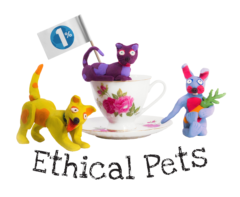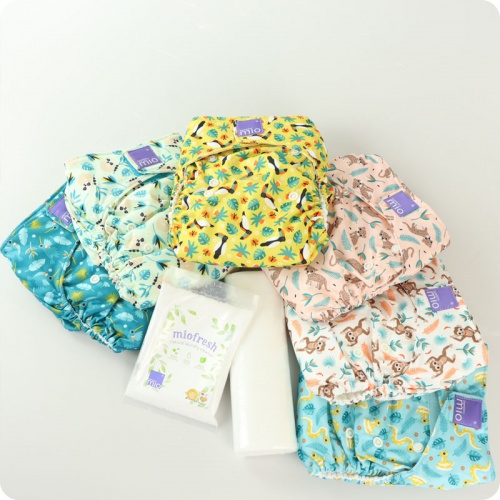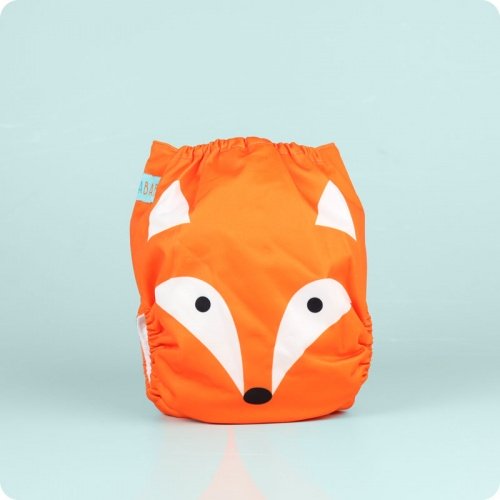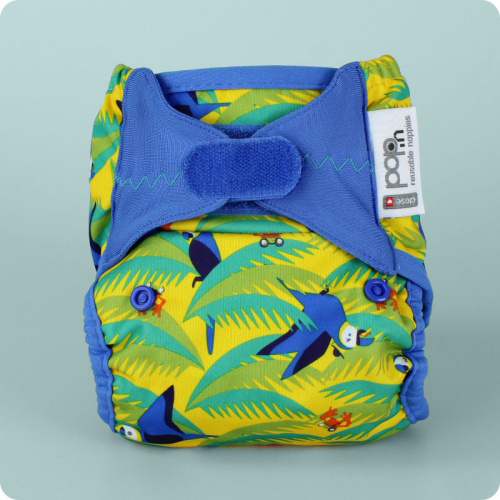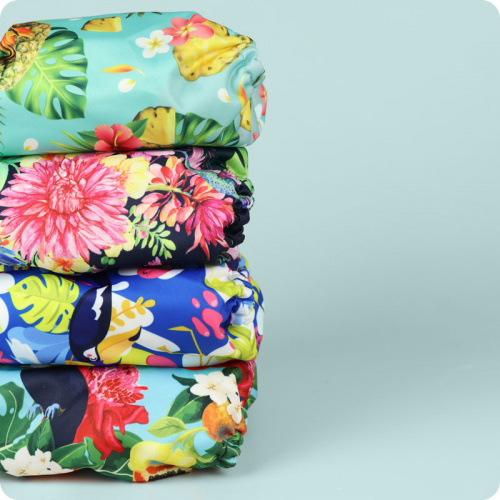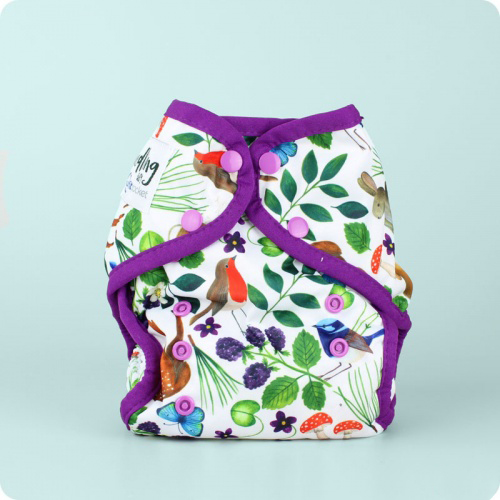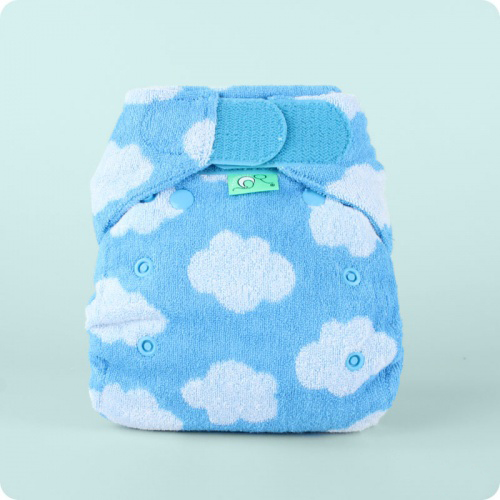We’re delighted to announce that we are expecting a baby! We are hoping they will be an eco baby, with things like second hand clothes and washable nappies, we are aiming for our little one to be as eco-friendly as possible.
The “due window” is mid August to Mid September (2020) – so it’s really not long to go now. We wanted to take a moment to share some simple ways to reduce the environmental impact of having a child. It would probably be better to start lecturing everyone after the baby has actually arrived… but we might not have time then! You can follow our series on Eco Babies here.
How Bad are Bananas/Babies?
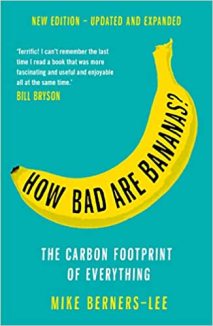
According to the wonderful book “How bad are Bananas” by Mike Berners-Lee, having a child is in the “100 tons to 1 million tons” of CO2e category.
That’s right up there with a hectare of deforestation or hosting a sporting World Cup, so we thought we should get a handle on the baby’s carbon foot print right away! Eco babies don’t grow on trees, after all!
Incidentally, this favourite book of ours is getting a full update and re-release any day now. Make sure to pre-order your copy!
Eco Baby Clothes
The first thing we decided was to get as much stuff second hand as we could – a solid start to raising an eco baby. We made sure to get a good range of styles and sizes, with the aim of avoiding “desperation shopping” for baby clothes in the supermarket. We got some free stuff from family/friends, but most of what we have is from ebay.
Does your brand new baby need brand new clothes?
Buying baby clothes is a funny business. Until the baby is born, you don’t really know what size will fit them – apparently for many babies newborn size is to small already. Also, even if it does fit, if will only be for a few months at best.
Because of this, most of the second hand baby clothes have only been worn a few times already.
On ebay there are loads of parents selling off bundles of lovely baby clothes for very reasonable prices. Here are some of what we bought so far:
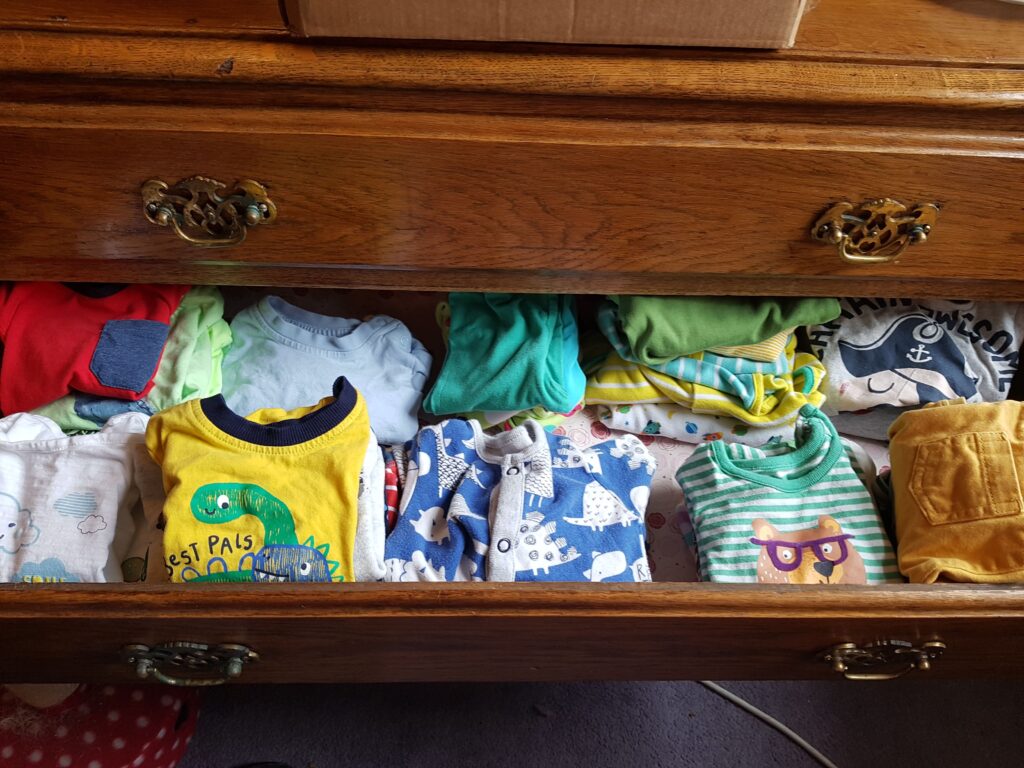
Top tips for buying eco baby clothes on ebay
Here are Anna’s top four tips for buying used baby clothes on ebay, the most eco-friendly clothes for your baby.
- Make sure to filter by “used” – ebay also has a lot of cheap imported new baby clothes which may not meet safety standards
- Check the brand in the item description to make sure you’re not “overpaying” for supermarket brand clothes, once you include postage
- Buy lots from the same seller – If you find a seller who’s taste is similar to yours, buy multiple things and ask them for a refund on extra postage. Postage is often the most expensive part, so this can really save you money.
- Shop Next and John Lewis for gender neutral clothes – these two brands seem to be pretty good at the gender neutral stuff, with lots of colours other than pink or blue available.
Consider Washable Nappies!
Another great way to be more sustainable as a parent is to washable nappies. I have had quite a few friends use washable diapers with their kids, and it seems to be pretty straight forward. They look lovely and are easy to look after too. Go eco baby!
It’s not just the eco-warriors and hippy types who rate these washable fancies any more. There are plenty of perfectly normal folk to who use cloth nappies because they’re just …. better than disposables!
Rhee from Mummy of Four is a good example (see her video below): she literally makes videos about cleaning, organising and shopping for a living, and even she loves her little washable nappies!
Are you willing to be flexible?
Washable nappies are pretty simple to try out, especially if you’re a flexible sort of person who is willing to use both plastic and cloth, and take things slowly. A solid start to raising an eco baby.
If you use disposable nappies for the first while and then get a washable nappy trial, you:
- Wont be burdened with sizing or fit issues
- Wont have loads of laundry from day one
- Will have time to make a decision
- Will be able to mix and match – e.g. cloth at home and disposable out and about
- May be less likely to buy the nappies and not use them
As “How Bad Are Bananas?” points out, the worst case scenario is buying a ton of washable nappies, getting bored and then throwing them away. That does not make for a good eco baby.
They only save carbon (and money) over years of use.
To get started, just get a few cloth nappies when you’re ready, preferably after the baby is born and preferably on a trial so you can return them. Try out using them part time and make sure you really want to do it. Then when you’re ready, buy a whole bunch!
Do you want to totally eliminate disposables?
If you want to be strict about not using disposable nappies at all, and you want to go 100% washable, then things are a little bit more complicated.
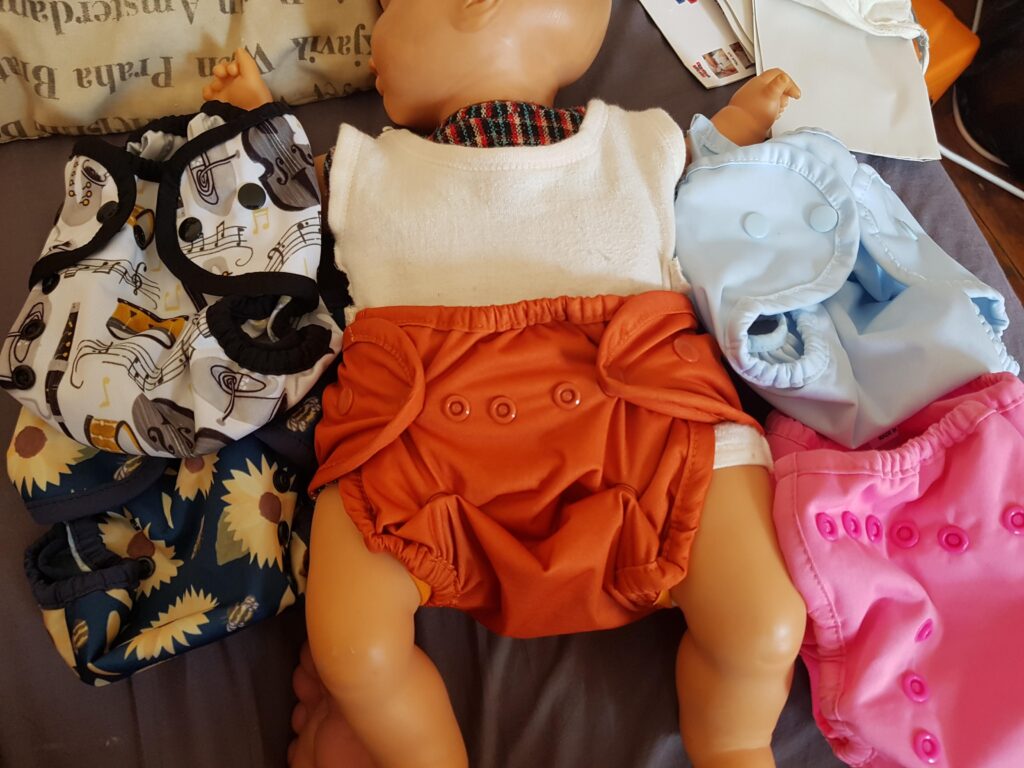
The difficulty is that most newborns will need a smaller cloth size nappy than the ones which fit from 3 months till potty training. This means you need a bunch of washable nappies just for the first few months, which may not be a sustainable thing to do.
After a lot of thought, we decided to go the whole hog and try to avoid using any disposable nappies – but we understand this decision isn’t viable for everyone. It’s also a bit of a gamble, in terms of environmental impact and financial cost.
We settled on some “pre-loved”/second hand nappy covers and bamboo pre-fold inserts. Pre-folds are the American style version of old fashioned terry-nappies. We will be able to re-use the pads to add night time absorbency in the larger size “pocket” style nappies later, which helps make the system more sustainable.
If we manage to use them full time and the baby takes a while to out grow them, these nappies will:
- Probably save us money – but only £100 or so
- Probably be less carbon intensive than disposables
- Definitely cut down on waste going to landfill
When we are ready, we will do a trial of the larger size nappies, and pick the ones we will use longer-term. This is where we really get to save some money and carbon!
Top tips for buying cloth nappies in pregnancy
- Watch a lot of YouTube videos about it
- Decide what kind of nappy you want to buy (or if you would rather wait)
- Think about your laundry routine: Where will they dry? How many nappies will you need? How often will you need to do a wash load? Are you sure this is practical?
- Work out how much you will save (or not) depending on how many you will need to buy and how long you might use them for
- Ready to buy? Shop around for a good deal, there are lots of dedicated sites selling them in the UK
- Don’t impulse buy cheap ones from china/Aldi etc – make sure they are safe, well reviewed and have all the features you need. Remember, they are only eco if you use them for years!
- When they arrive, look at them closely. Are they soft? Are they flexible? Are they fiddly or tricky to use? If you don’t like them, exchange them for a different kind.
- When you’re ready to commit, wash and dry the the nappies three times. Most cloth nappies need to be washed to reach good absorbency. You don’t want to discover that after the baby is born!
- You can also get washable baby wipes, from companies like Cheeky Wipes. These seem great too. We got a starter set.
Make your own bits and bobs
Finally, if you have time and spare bedsheets etc, consider make some of your own burping cloths and whatnot.
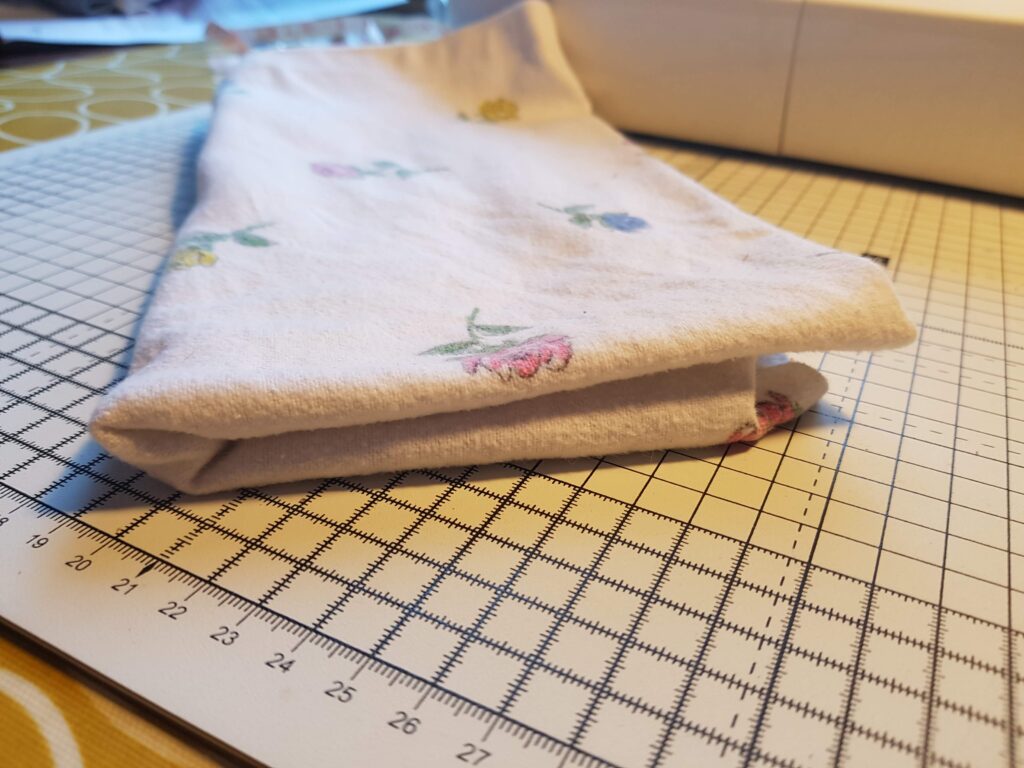
All right, it’s not going to save you much money, and it takes up an annoying amount of time – but it can be a really good way to prepare for the baby that doesn’t involve spending money.
Also, it’s very … grounding: if you’re not great at sewing, they won’t be perfect. They will just be “good enough” burping cloths from a “good enough parent“. A gentle reminder that you can’t be perfect and it’s the love and thought that counts!
